 Semipalmated Sandpiper (Calidris pusilla)
Semipalmated Sandpiper (Calidris pusilla)
 Semipalmated Sandpiper (Calidris pusilla)
Semipalmated Sandpiper (Calidris pusilla) |
 |
| Pictures (click on them to enlarge) | ||
|---|---|---|
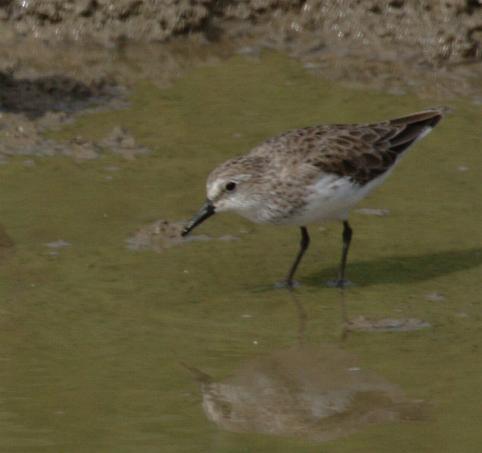 © Ward Vercruysse | 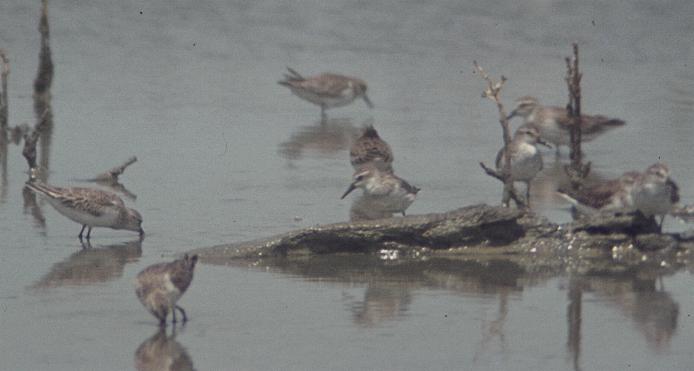 © Arie Spaans | 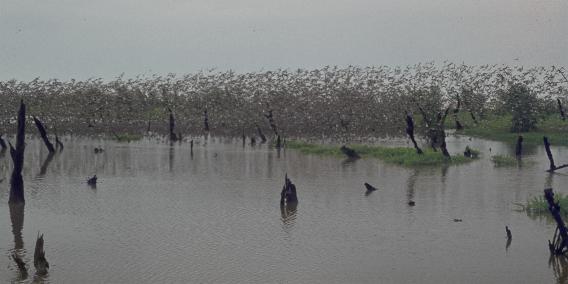 © Arie Spaans |
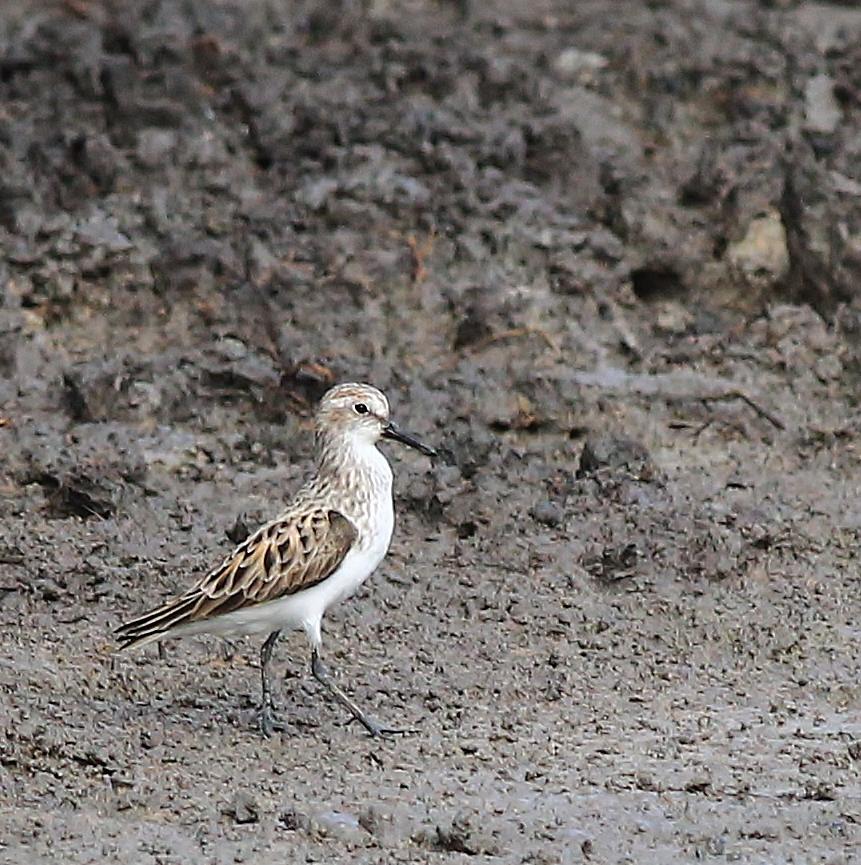 © Jean-Louis Rousselle | 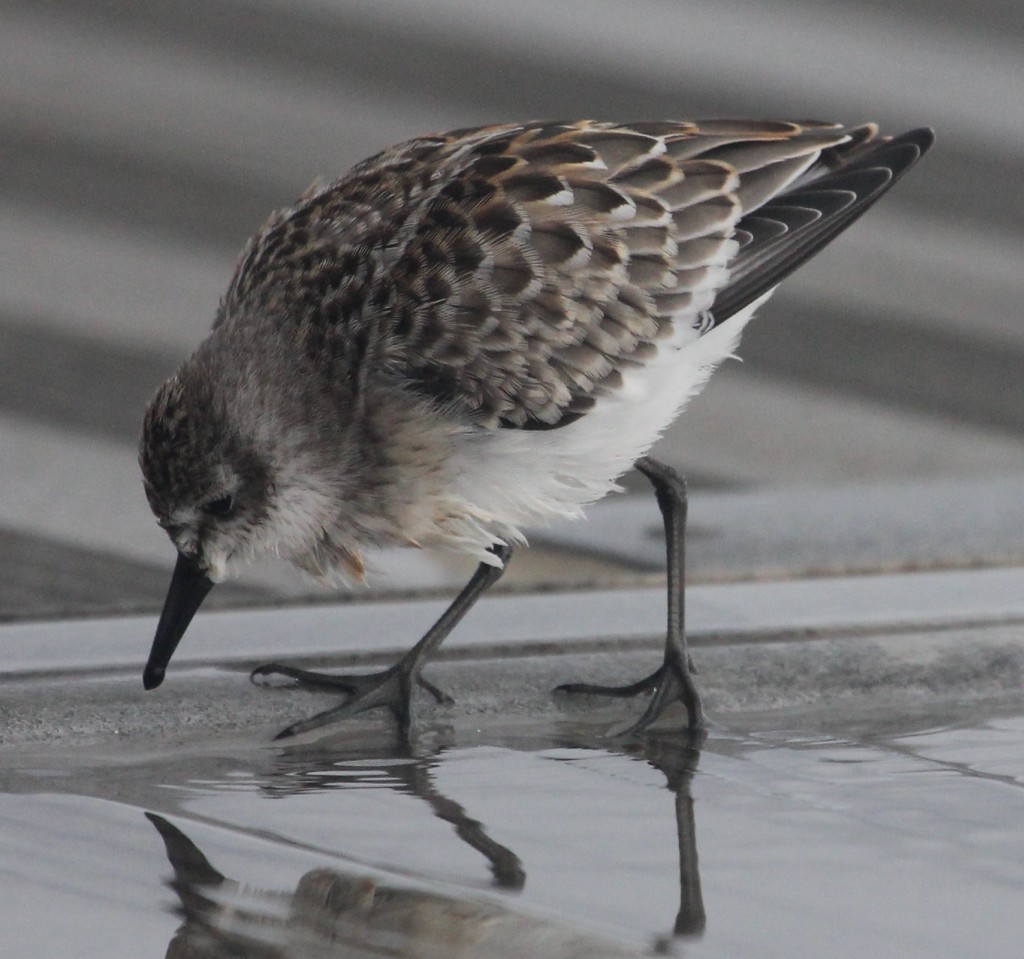 © Andy Williams |  © Andy Williams |
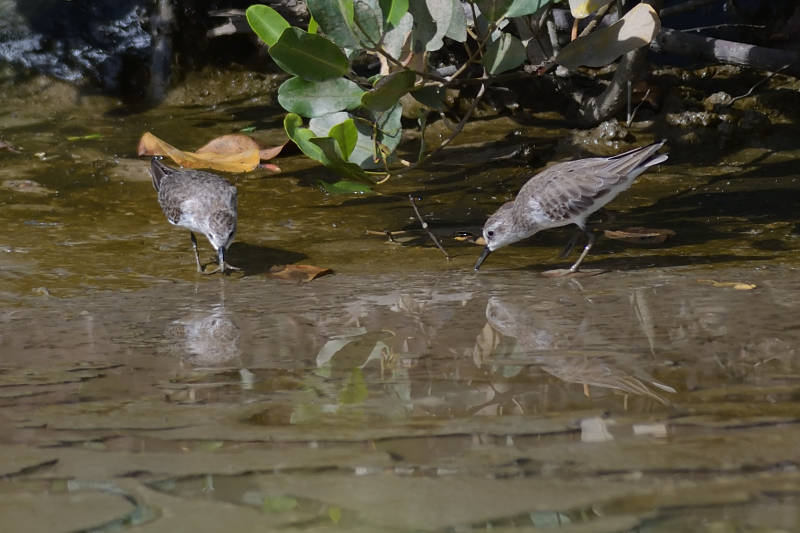 © Bert van den Broek |  © Erik Toorman |
| Semipalmated Sandpiper: These migrants from North America are very numerous in Suriname. Spaans and de Jong (Waterfowl and wetlands in Suriname, a publication from the seventies) estimate maximum numbers of 2-5 million in march-april and october-november, the peak in the migration for Suriname (in the seventies). They stay mainly along the coast on muddy places. It is then that sometimes the sun is obscured by their numbers, like on the photo below (well, not literally). Numbers now (2022) will be less as the total world population has shrunk. But they were also seen deep in the south of the country on the Sipaliwini savanna. It can easily be confused with the Western sandpiper (tapered bill) and the Least sandpiper (smaller and yellow feet with thin bill). The first picture was taken by Ward Vercruysse in March 2009. The two other pictures have been made by Arie Spaans. The next photo was made by Jean-Louis Rousselle in April 2013 at Weg naar Zee. Michiel vd. Bergh made a video at Weg naar Zee in October 2022 and het writes:"Never before I saw so many sandpipers at Weg naar Zee as yesterday evening. This is only a part of the numbers at high tide. More than 10,000s of birds, most of them semipalmated Sandpipers, but I also saw 7 Hudsonian Godwits." Dominiek Plouvier made the second video of a non breeding adult semipalmated sandpiper. |
| Video (click the link or the 'play'-button to see) | ||
|---|---|---|
| Video recording of a Semipalmated Sandpiper © ; | Video recording of a Semipalmated Sandpiper © ; |
|
|
||||||||||||||||||||||||||||||||||||||||||||
| Observations through the year | Observations of breeding through the year |
|---|---|
| The 400 reported observations of this bird in Suriname, mainly for the last 50 years up to 2018, have been grouped by month. More birds on one day are counted as one observation. Of course, if the graph should depict the total number of birds seen, the differences between the months could be much more pronounced. | The reported breeding observations of this bird in Suriname. Most observations are about nest with eggs, some about fledglings, or feeding at a nest or the building of a nest. Of the about 5000 nests and eggs found for all species together, about 1/3 comes from the egg collection of Penard between 1896 and 1905. For some reason most collecting then was done in the first half of each year, so the shown distribution does not necessarily reflect the actual breeding preferences. The main dry season in Suriname is reckoned to be from half August to the end of November, the main wet season from half April to half August, but the the timing of begin and end does vary from year to year. Around March a second dry season often occurs. |